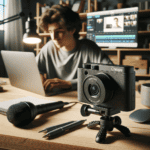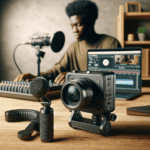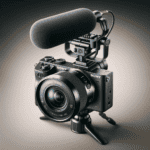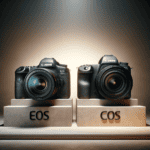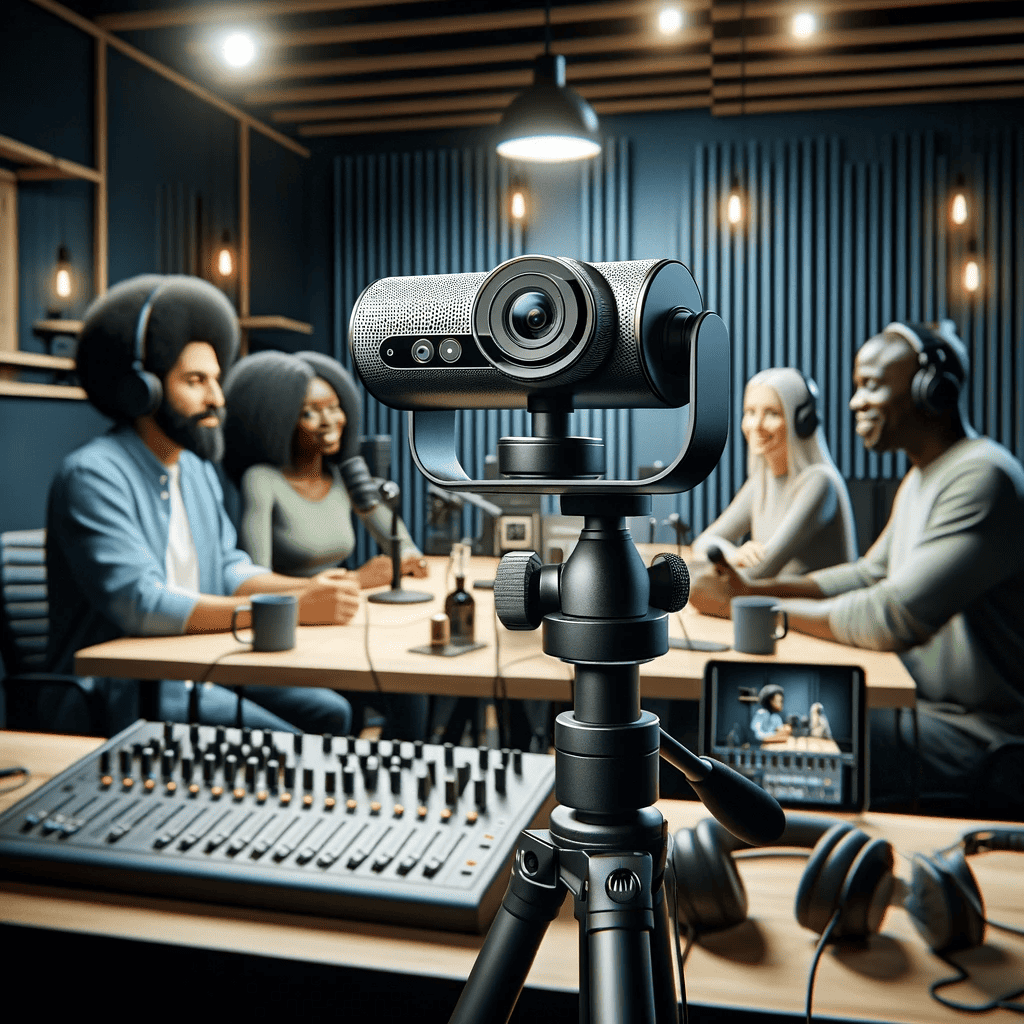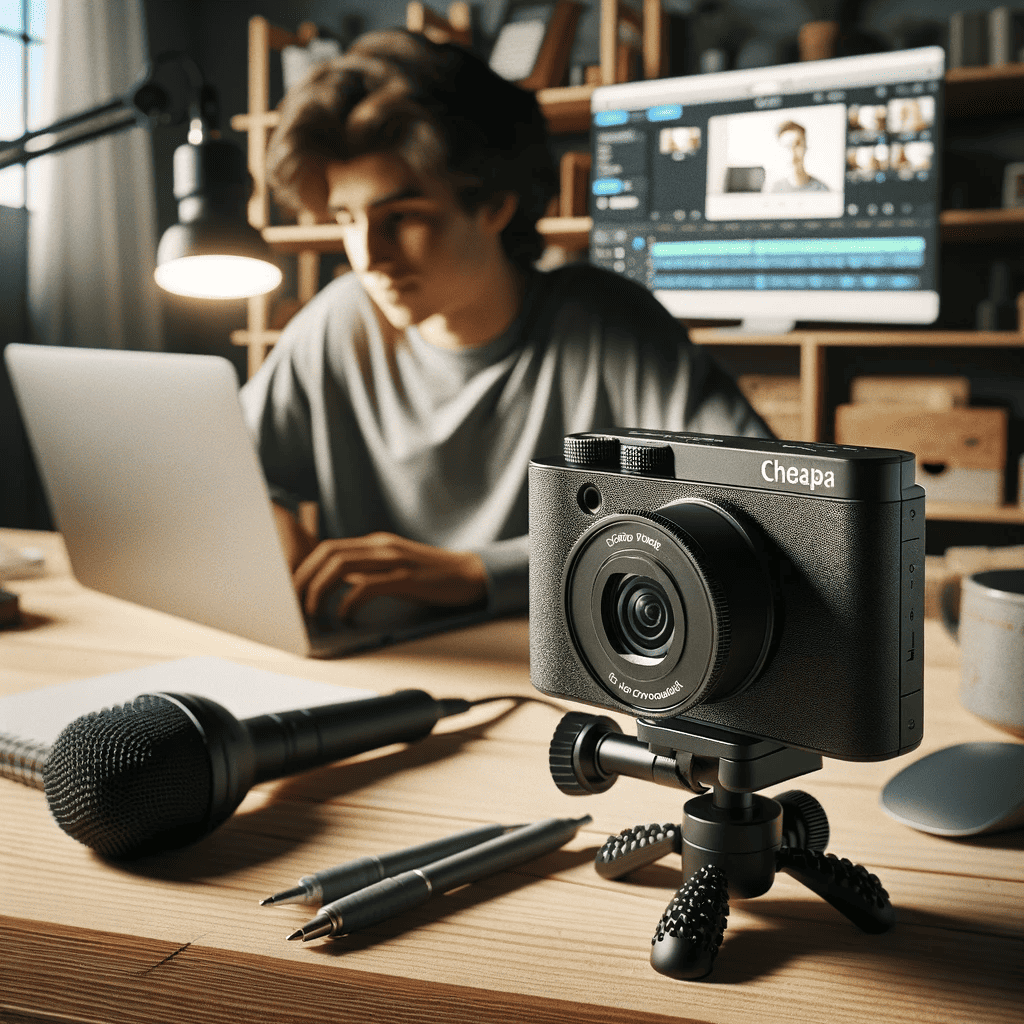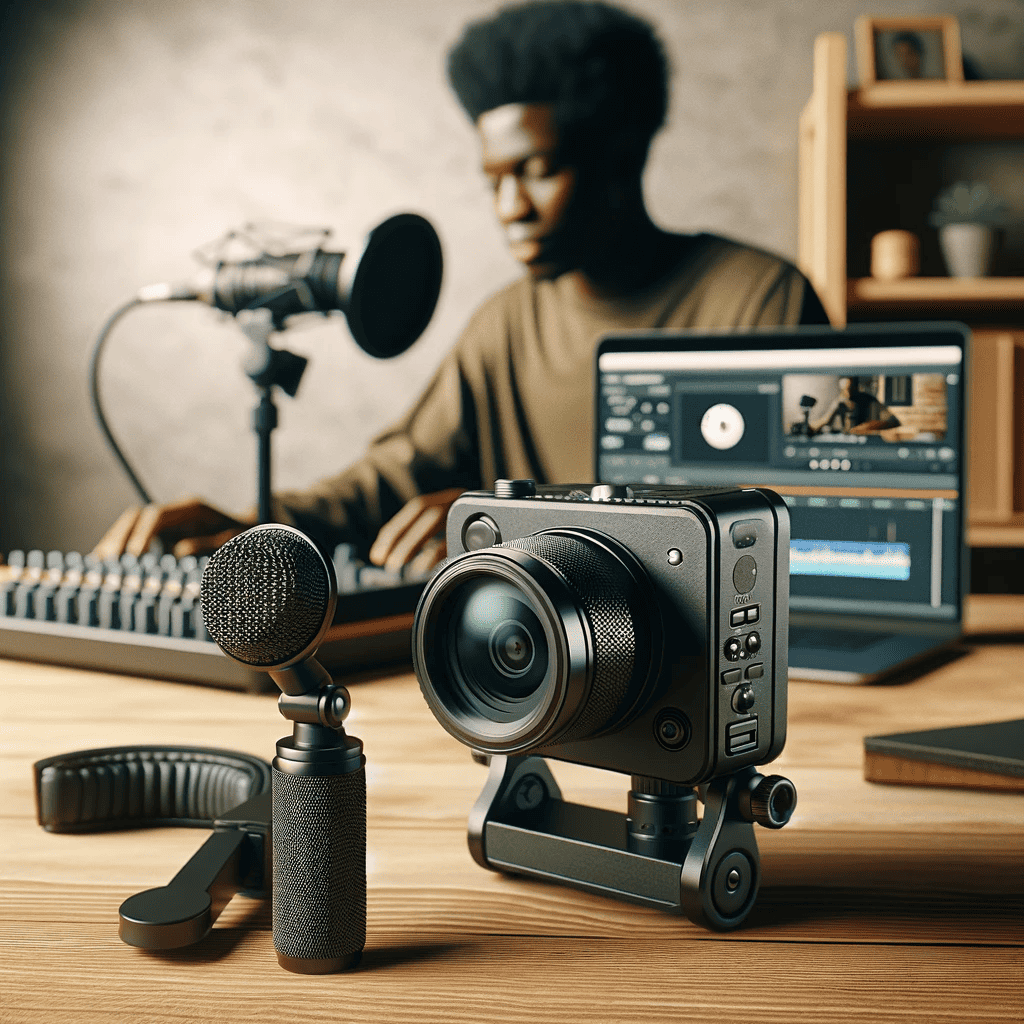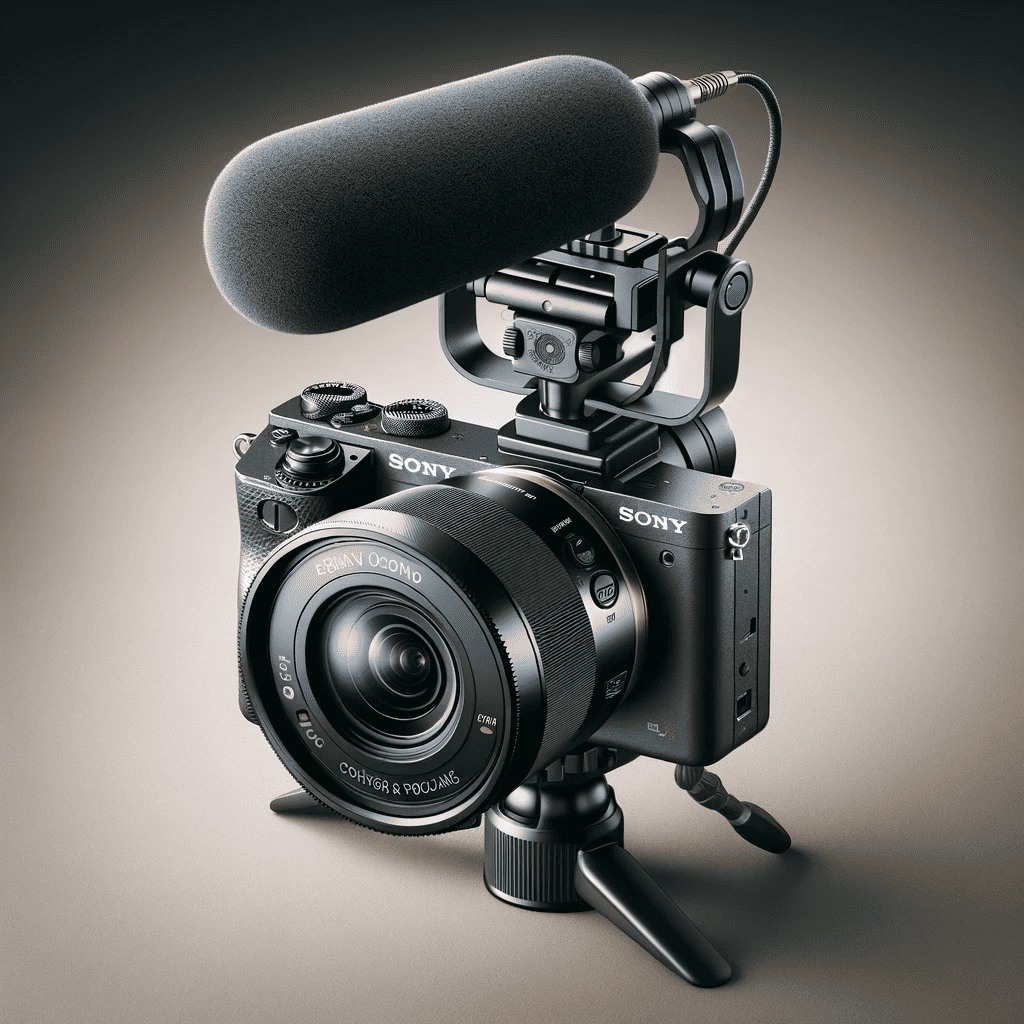Introduction
Digital cameras play a crucial role for graphic designers, enabling them to capture high-quality images that serve as valuable resources for their designs. These cameras offer a level of control and precision that cannot be achieved with smartphones or stock photos. With a digital camera, graphic designers have the flexibility to capture specific angles, lighting conditions, and subjects that align with their creative vision.
Importance of a digital camera for graphic designers
A digital camera is essential for graphic designers as it allows them to have full control over the images they use in their designs. Unlike relying solely on stock photos or free image resources, having a digital camera enables graphic designers to create original visual content that is unique and tailored specifically to their projects. This originality can greatly enhance the overall quality and impact of their designs.
Additionally, using a digital camera provides graphic designers with higher resolution images than what most smartphones can offer. This increased resolution results in sharper details and more vibrant colors, allowing for greater accuracy when incorporating images into various design elements such as logos, illustrations, or website visuals.
Overview of the different factors to consider when choosing a camera
When selecting a digital camera for graphic design purposes, several factors should be taken into consideration. First and foremost is the resolution of the camera’s sensor. A higher resolution allows for greater detail capture and ensures clear visuals even when scaling or zooming in on images.
Another critical factor to consider is lens compatibility and versatility. Different lenses provide varying focal lengths and shooting capabilities suited for various types of projects.
Graphic designers need lenses that can capture both close-up details (macro lenses) as well as wide-angle shots (wide-angle lenses) when working on different design elements such as product packaging or website banners. Additionally, image stabilization technology should be considered since it reduces blur caused by shaky hands or movement during shooting sessions.
This feature is particularly relevant when capturing images in low-light conditions or for taking long-exposure shots. The camera’s customization options should not be overlooked.
Being able to adjust settings and save custom profiles allows graphic designers to have greater control over the camera’s functions and adapt them to their specific needs for different projects. Customizable buttons and dials can greatly enhance efficiency during shooting sessions, enabling quick adjustments without interrupting the creative process.
Canon EOS 5D Mark IV
Key features and specifications: – The Canon EOS 5D Mark IV boasts a full-frame 30.4-megapixel CMOS sensor, offering high-resolution images with excellent detail.
– It has a wide ISO range of 100-32000 (expandable to 50-102400), enabling graphic designers to capture stunning shots even in challenging lighting conditions. – The camera features the DIGIC 6+ image processor, ensuring fast and accurate processing of images with minimal noise.
– Its advanced autofocus system consists of 61 AF points, including 41 cross-type points, providing precise focus tracking for moving subjects. Benefits for graphic designers:
– With its high resolution and dynamic range, the Canon EOS 5D Mark IV allows graphic designers to capture images with exceptional clarity and detail, ideal for projects that require precise visuals. – The camera’s superior low-light performance ensures clear and noise-free images even in dimly lit environments, making it suitable for capturing design inspirations during events or in the evening.
– Its extensive ISO range enables flexibility in various lighting conditions without compromising image quality, perfect for outdoor shoots or studio work that requires controlled lighting setups. Sample images captured with the camera:
[Include a few sentences describing some sample images captured using the Canon EOS 5D Mark IV. Mention aspects like color accuracy, sharpness, and overall image quality.]
Nikon D850
Key features and specifications: – The Nikon D850 offers a remarkable 45.7-megapixel backside illuminated (BSI) full-frame CMOS sensor that delivers exceptionally detailed photographs with reduced noise levels.
– It has an impressive ISO range of 64 to 25600 (expandable to ISO 32 -102400), allowing graphic designers to achieve stunning results even in challenging lighting situations. – With its EXPEED 5 image processor, the camera ensures fast and efficient image processing, resulting in vibrant colors and sharp details.
– The D850 has an advanced 153-point autofocus system, including 99 cross-type sensors, offering precise subject tracking and focus accuracy. Benefits for graphic designers:
– The high-resolution sensor of the Nikon D850 allows graphic designers to capture images with incredible detail and clarity, perfect for creating impactful visuals or print designs that demand high-quality photographs. – Its extended ISO range provides flexibility in various lighting conditions without compromising image quality, ensuring accurate reproduction of colors and reduced noise levels.
– The camera’s comprehensive autofocus system enables quick and precise subject tracking, allowing graphic designers to capture fast-moving objects or people with ease. Sample images captured with the camera:
[Include a few sentences describing some sample images captured using the Nikon D850. Mention aspects like dynamic range, color reproduction, and overall image quality.]
Sensor Size and Resolution
Explaining Sensor Sizes
Sensor sizes in digital cameras can vary, with the most common types being full-frame and APS-C. Full-frame sensors are larger and offer a wider field of view, allowing for better low-light performance and more depth of field control.
APS-C sensors, on the other hand, are smaller and result in a narrower field of view. Understanding the differences between these sensor sizes helps graphic designers choose a camera that suits their needs.
The Importance of Resolution
Resolution plays a crucial role in graphic design projects as it determines the level of detail captured in an image. Higher resolution cameras produce images with more pixels, resulting in sharper details when zoomed or printed at larger sizes.
This is especially important for designers who need to work with high-resolution imagery for print or web projects that require meticulous attention to detail. Opting for a camera with ample resolution ensures that graphic designers can create stunning visuals without compromising quality.
Lens Compatibility and Versatility

Different Lens Options
Digital cameras offer various lens options that cater to different needs. Prime lenses have fixed focal lengths, providing excellent image quality and wider apertures for better low-light performance. Zoom lenses offer variable focal lengths, allowing photographers to adjust the framing without changing lenses.
Graphic designers should consider their specific requirements when selecting lenses – prime lenses suit those who value image quality and low-light capabilities, while zoom lenses provide flexibility for capturing various subjects. a) Prime Lenses vs Zoom Lenses: Prime lenses excel in image sharpness and light-gathering abilities due to their fixed focal length, making them ideal for portrait photography or situations demanding artistic precision.
In contrast, zoom lenses provide versatility by offering multiple focal lengths within one lens – perfect when shooting diverse subjects or capturing changing scenes. b) Macro Lenses for Detailed Shots: Macro lenses are designed for close-up photography, enabling graphic designers to capture intricate details with exceptional clarity.
Ideal for product photography or capturing fine textures, these lenses allow designers to explore the minute aspects of their subjects and create visually compelling images. c) Wide-Angle Lenses for Capturing Large Spaces: Wide-angle lenses have a broader field of view, making them suitable for capturing expansive landscapes or interior shots.
Graphic designers can use wide-angle lenses to emphasize the scale of a space or include extensive backgrounds in their compositions. It’s an excellent option when working on architectural projects or showcasing environments that require context.
Image Stabilization and Low-Light Performance
An Explanation of Image Stabilization Technology
Image stabilization technology helps reduce camera shake, resulting in sharper images when shooting handheld or in low-light conditions. There are two main types: in-body image stabilization (IBIS) and lens-based stabilization systems. a) In-Body vs Lens-Based Stabilization Systems: In-body image stabilization is built into the camera body itself, allowing any lens attached to benefit from the stabilization effect. Lens-based stabilization employs optical elements within specific lenses to counteract camera shake.
Both systems offer advantages, but having in-body image stabilization gives graphic designers more flexibility as it works with any compatible lens they choose. b) Benefits in Low-Light Situations: When shooting under challenging lighting conditions, such as indoors or at night, image stabilization becomes crucial.
It helps compensate for hand movements that can cause blurriness and enables photographers to use slower shutter speeds without sacrificing sharpness. For graphic designers who often work with dimly lit environments or require sharp imagery when photographing stationary objects without a tripod, having good image stabilization enhances their creative possibilities while maintaining high quality.
Camera Customization Options
Explanation of custom settings on cameras: Camera customization options allow graphic designers to personalize their shooting experience and optimize it for their specific needs. a) Customizable buttons and dials: Cameras often have buttons and dials that can be assigned custom functions. Graphic designers can assign frequently used settings, such as ISO, exposure compensation, or white balance, to these buttons and dials for quick access, enhancing efficiency during shooting.
b) Saving custom profiles: Some cameras offer the option to save customized shooting profiles. Graphic designers can create different profiles tailored to specific shooting scenarios or preferences.
For example, they can save one profile with settings optimized for product photography and another for portrait photography. Switching between these profiles allows for seamless transitions between different shooting situations.
File Formats and RAW Capabilities
Importance of shooting in RAW format: RAW files retain all the details captured by the camera’s sensor, providing graphic designers with maximum flexibility during post-processing. Shooting in RAW format ensures higher image quality by preserving more information compared to JPEG files. Explanation of different RAW formats (CR2,…): Different camera brands use various proprietary RAW formats like CR2 (Canon), NEF (Nikon), or ARW (Sony).
Each format has its own unique benefits and features. Graphic designers should be aware of the compatibility of their preferred editing software with these file formats to ensure a smooth workflow. Conclusion:
Understanding the rarely known small details about digital cameras is crucial for graphic designers seeking optimal performance in their work. Camera customization options enable personalized settings for greater efficiency during shootings.
Additionally, being knowledgeable about file formats and utilizing RAW capabilities ensures maximum image quality and post-processing flexibility. By harnessing these lesser-known aspects of digital cameras specifically tailored towards graphic design needs, designers can enhance their creativity while producing outstanding visual content.

